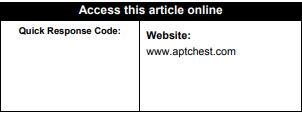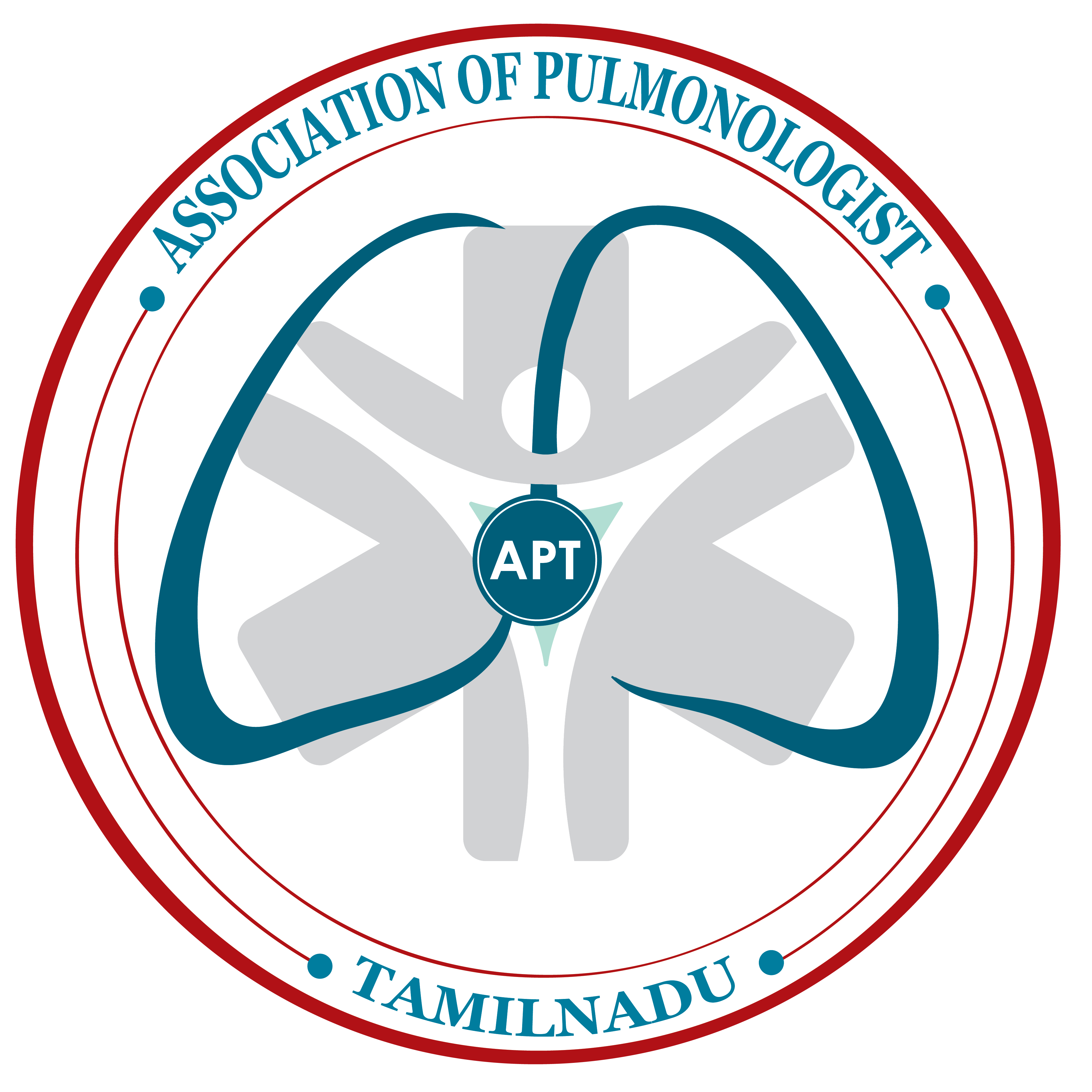Dakshinamurthy et al.: Bronchoscopy Quiz
Bronchoscopy Quiz
Dakshinamurthy B1, and Narasimhan.R2
1Post Graduate, Department of Respiratory Medicine, Apollo Hospitals, Greams Road, Chennai
2Senior Consultant Pulmonologist, Department of Respiratory Medicine, Apollo Hospitals, Greams Road, Chennai
How to the cite this article: Dakhinnamurthy Band Narasimhan. R Bronchoscopy QUIZ,JAPT 2019; 2(3):133-134
THE THIRD EYE
Case History
This 38 years old gentleman with no known comorbidities, who had completed treatment for Multidrug Resistant tuberculosis in the past came with complaints of cough with expectoration and hemoptysis for the past 3 months. On evaluation he was hemodynamicallystable stable and X-ray showed minimal right upper zone fibrotic strands. CT chest done showed right upper lobe patchy fibrosis with minimal Ground glassing opacities and lingular The trachea on the right side just above the carina and changes. Fibre optic bronchoscopy was proceeded to look for the bleeding and that showed the following findings,
Radiological and Bronchosopic Images



The CT chest showed an outpouching of the treachea on the right side just above the carina and the corresponding bronchoscopic image shows a similar opening on the right side of the trachea supplying the whole of the right upper lobe.The usual right main bronchus supplied the right middle and lower lobes only.
Discussion
A trachea bronchus is an anatomical variant where an accessory bronchus originates directly from the supracarnial trachea. The term pig bronchus or bronchus (usually right side) is supplied by this bronchus1. It was initially described nu Sandifrt in 17852. Incidence is estimated at ~1% (range 0.1- 2%), and there is a marked right sided predilection1-3.Often incidentally discovered and most patients are asymptomatic.Ocassionally patients may have a recurrent (right) upper lobe pneumoniadue to focal emphysematous change.
Pathology
Tracheal bronchi arise from the right lateral wall of the trachea usually at a distance of
There are three embryological theories oftracheal bronchus formation.
- The reduction theory suggests it results from
the reduction of a previously developed
bronchus. - The migration theory explains it to be extension or migration of a part of the developed hyparterial branching pattern to a different location either on trachea or bronchus.
- The selection theory postulates that local morphogenesis disturbances cause bronchial abnormalities, claiming that bronchus can arise if the bronchial mesenchyme comes in contact with the tracheal epithelium.2
They can be classified into two main types:
Supernumerary: usual bronchial supply to affected lung segment is concurrently present
The supernumerary bronchi may end blindly; in that case, they are also called tracheal diverticula. If they terminate in aerated or bronchiectasis lung tissue, the term for this is apical accessory lungs or tracheal lobes.4
Displaced: usual bronchial supply to affected lung segment is concurrently absent
Any obstruction of the tracheal bronchus can lead to atelectasis, decrease ventilation, and infection. Hence in children, recurrent upper lobe pneumonia is a common presentation. These complications usually occur when the clinician does not diagnose the tracheal bronchus.5 Patients frequently present with wheezing and hypoxia due to the narrowing of the aberrant bronchus and may be mistaken for asthma. Abnormal ventilation mechanics may contribute to patientsymptoms6. There have been cases reporting tracheal bronchus associated with TB, leiomyoma, cancers, and as a source of bleeding leading to death.
Incidental intubation of tracheal bronchus can cause obstruction, pneumothorax, post obstructive pneumonia, and respiratory failure.7 CT is the best modality for assessing the anatomy and allows direct visualization and orientation of the anomalous bronchus. Coronal multi-planar reconstructions in “lung window” settings are the most helpful and is best in depicting this anomaly
Complications
- Recurrent pneumonia
- Atelectasis
- Acute respiratory failure
- Aspiration pneumonia if there is communication with the esophagus
- Congestive heart failure if coexisting congenital heart anomaly
References
-
- Müller NL, Silva CI. Imaging of the chest. (2008) ISBN:141604048X.
- Ghaye B, Szapiro D, Fanchamps JM et-al. Congenital bronchial abnormalities revisited. Radiographics. 21 (1): 105-19
- Shih FC, Lee WJ, Lin HJ. Tracheal bronchus. CMAJ. 2009;180 (7): 783.
- Berrocal T, Madrid C, Novo S, Gutiérrez J, Arjonilla A, Gómez-León N. Congenital anomalies of the tracheobronchial tree, lung, and mediastinum: embryology, radiology, and pathology. Radiographics. 2004 JanFeb;24(1):e17
- Setty SP, Michaels AJ. Tracheal bronchus: case presentation, literature review, and discussion. J Trauma. 2000 Nov;49(5):943-5.
- Qi S, Zhang B, Yue Y, Shen J, Teng Y, Qian W, Wu J. Airflow in Tracheobronchial Tree of Subjects with Tracheal Bronchus Simulated Using CT Image Based Models and CFD Method. J Med Syst. 2018 Mar 01;42(4):65.
- Lai KM, Hsieh MH, Lam F, Chen CY, Chen TL, Chang CC. Anesthesia for patients with tracheal bronchus. Asian J Anesthesiol. 2017 Dec;55(4):87-88.





